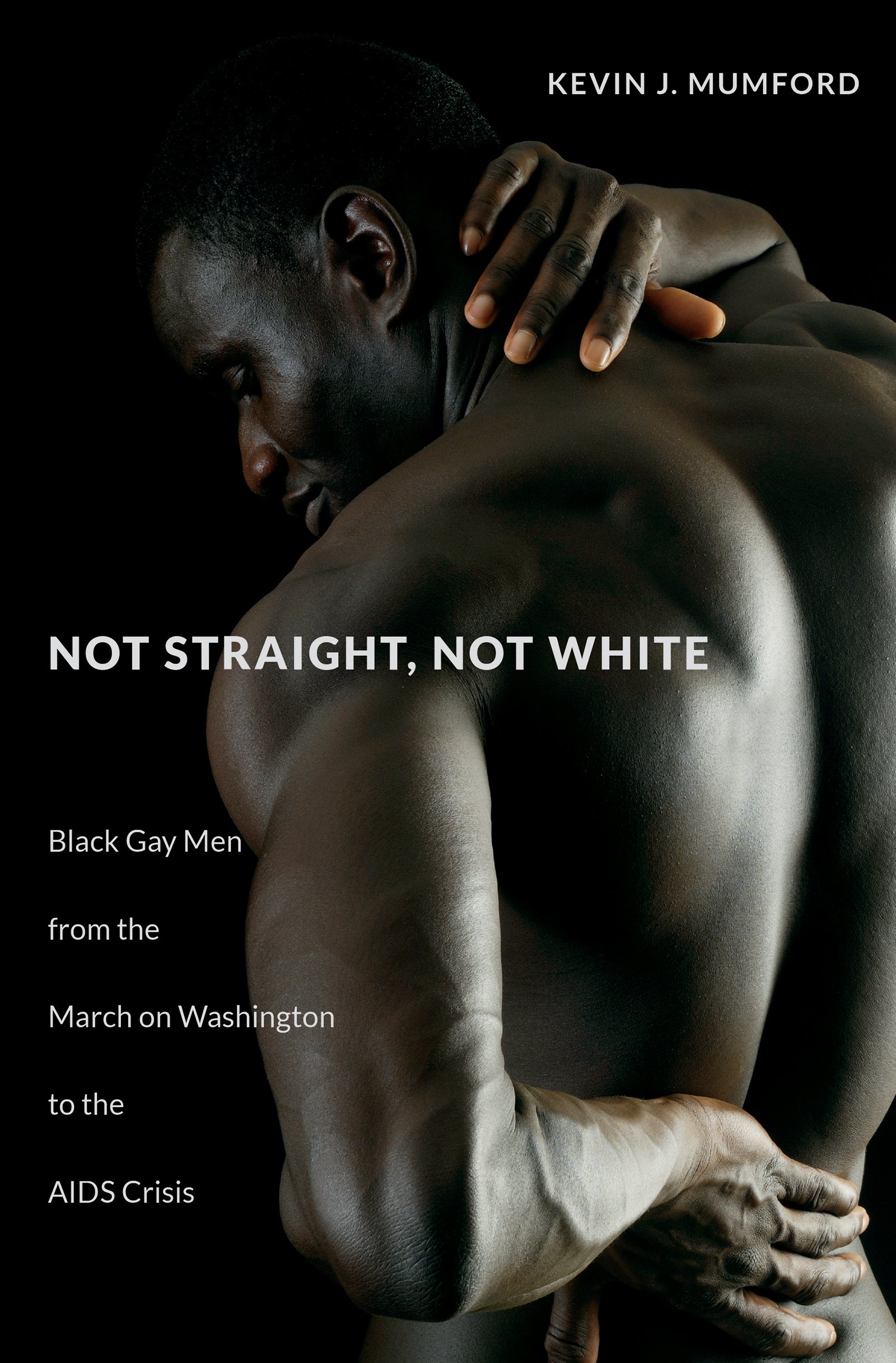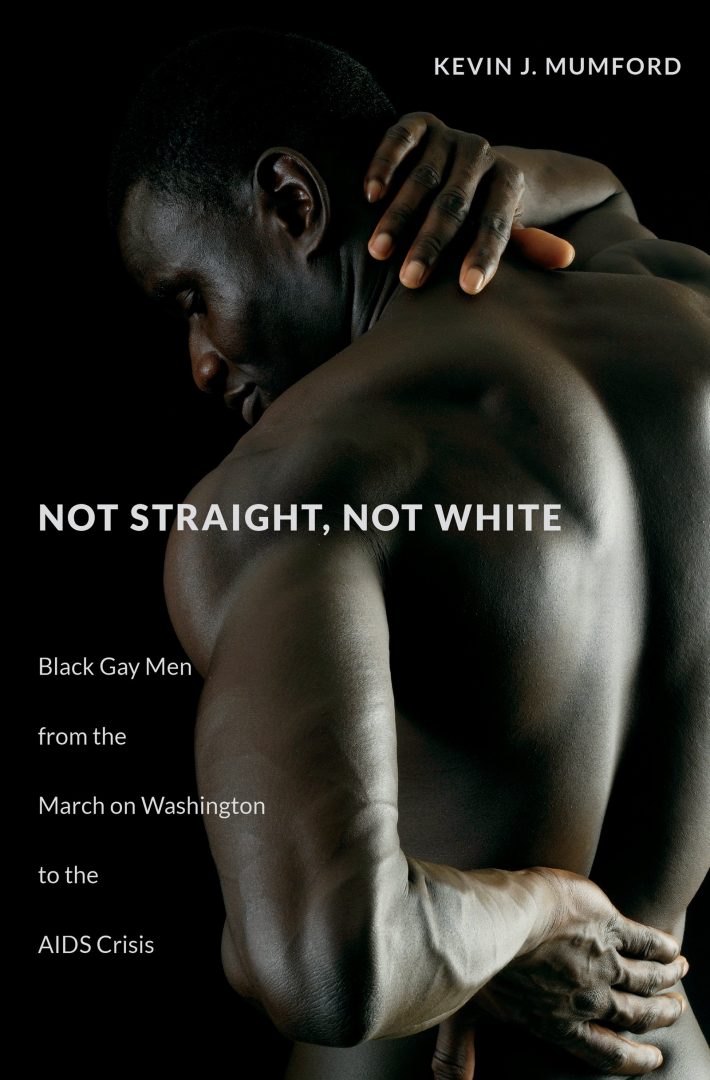‘Not Straight, Not White: Black Gay Men from the March on Washington to the AIDS Crisis’ by Kevin J. Mumford

Author: Charles Stephens
July 3, 2016
The history of black gay men in America often gets narrowly framed between Bayard Rustin’s masterful organizing of the 1963 March on Washington and the success of Lee Daniel’s show Empire, with a few points in between. However, there are key figures, that have been marginalized and largely forgotten in the more institutionalized versions of LGBT history. These key figures and events, are critical to understanding the political evolution of black gay male political consciousness and movement building. It is in this spirit and in the pages of Not Straight, Not White: Black Gay Men from the March on Washington to the AIDS Crisis that historian Kevin Mumford seems to find his inspiration. The book is deeply engaged in answering the question, not posed in the title, but hinted at, “What does it mean for a group of people with neither white, masculine, nor heterosexual privilege to find a political voice?” and “How did black gay men from the 1960s forward navigate racial and sexual oppression?”
Where Kevin Mumford is the most successful, is in his depiction and elevation of black gay men, culturally impactful at particular points in time, but for various reasons, largely forgotten by movement and academic histories. Performer Jason Holliday (born Aaron Payne) the subject of the 1967 Shirley Clarke documentary film Portrait of Jason, is one such figure, and points to a kind of the racial fetishization of black gay men by the art word that anticipates debates surrounding Jennie Livingston’s documentary Paris is Burning decades later and to a lesser extent Robert Mapplethorpe’s images of black men. The complicated relationship between black gay men and white gatekeepers, particularly white women in the art world, gets necessary critical attention in Mumford’s work through a close examination of the relationship between Holliday and Clarke. This echoes the larger narrative woven throughout the book, of black gay men attempting to navigate cultural and political institutions, but often being limited by the structural violence they confront. Brother Grant-Michael Fitzgerald who Kevin Mumford discusses extensively in chapter 5, is another important figure, largely obscured by movement history and collective memory. Fitzgerald was an activist, rooted in the Catholic tradition, that found himself articulating a position as a black gay religious leader in the 1970s and was often at odds with both the broader black community, but also LGBT political spaces. Then there is Mumford’s resurrection of writer and editor Joseph Beam. Though Beam is perhaps one of the more known black gay historical figures, Mumford offers a coherent and unified biography of Beam that manages to showcase his brilliance and simultaneously humanize him.
Where the book really soars is in Mumford’s keen insights as not only a historian, but cultural theorist. This is on full display through his examination of discourses emanating from the social sciences of the 1960s and 70s. These discourses, exemplary of the controversial 1965 Moynihan Report, while attempting to explain or describe how structural conditions impact black communities, ultimately end up trafficking in the worst kinds of racist stereotypes. This has larger implications for a perpetuation of deep cultural pathologies that more often than not, land in the policy realm. On the other hand Mumford discusses Jet magazine’s complex history of depicting black queer life, and the arguably tacit acceptance demonstrated early on.
Where the book could have gone a bit further is in who the author chose not to cover. Though it is impossible for any single work to depict every person and every event relevant to the history of black gay men, even if such a history is narrowed to just the past 50 years, it would have been valuable to witness figures like Marlon Riggs and Essex Hemphill show up more robustly, and AIDS Activists such as Craig Harris and Reggie Williams, to show up at all. Another area of immense potential is that the work seemed to have little to say about black gay men outside of the East coast. The book focused heavily on New York, Philadelphia, and Washington, DC. Finally, for the author to write so extensively about James Baldwin, it was curious that he had so little to say about the novel Just Above My Head, a work that has inspired so many black gay writers and activists.
However, these considerations do not take away form the overall power of the work. The author has an agenda, to offer insight into how generations of black gay men grappled with racial and sexual oppression, and he achieved this, while also providing blueprints for black gay men today.
Not Straight, Not White: Black Gay Men from the March on Washington to the AIDS Crisis
By Kevin J. Mumford
University of North Carolina Press
Hardcover, 9781469626840, 272 pp.
March 2016

